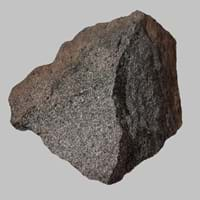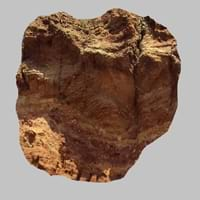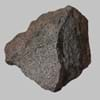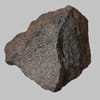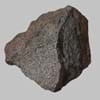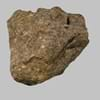Definition
Enderbite rock is an igneous rock which belongs to the Charnockite rock series
A carbonate rock which is matrix supported and contains over 10% allochems in a carbonate mud matrix.
Origin
Enderby Land, Antarctica
Unknown
Discoverer
Unknown
Unknown
Etymology
From its occurrence in Enderby Land, Antarctica
From the English mud and stone, from low German mudde and stainaz
Class
Igneous Rocks
Sedimentary Rocks
Sub-Class
Durable Rock, Hard Rock
Durable Rock, Soft Rock
Group
Plutonic
Not Applicable
Other Categories
Coarse Grained Rock, Opaque Rock
Fine Grained Rock, Opaque Rock
Color
Black, Grey, Orange, Pink, White
Black, Blue, Brown, Green, Grey, Orange, Red, White, Yellow
Durability
Durable
Durable
Scratch Resistant
Yes
Yes
Appearance
Veined or Pebbled
Rough and Dull
Interior Uses
Bathrooms, Countertops, Decorative Aggregates, Entryways, Floor Tiles, Homes, Hotels, Kitchens, Stair Treads
Decorative Aggregates, Flooring, Interior Decoration
Exterior Uses
As Building Stone, As Facing Stone, Bridges, Paving Stone, Garden Decoration, Office Buildings
As Facing Stone, Garden Decoration, Roof Tiles
Other Architectural Uses
Curbing
Curbing
Construction Industry
As Dimension Stone
Cement Manufacture, Construction Aggregate, for Road Aggregate, Making natural cement, Raw material for the manufacture of mortar
Medical Industry
Not Yet Used
Not Yet Used
Antiquity Uses
Artifacts, Monuments, Sculpture, Small Figurines
Artifacts, Sculpture
Commercial Uses
Curling, Gemstone, Laboratory bench tops, Tombstones
Cemetery Markers, Pottery
Types
Not Available
Marl, Shale and Argillite
Features
Available in Lots of Colors and Patterns, It is One of the Oldest, Strongest and Hardest Rock
Available in Lots of Colors and Patterns, Smooth to touch, Very fine grained rock
Archaeological Significance
Monuments
Used
Not Yet Used
Famous Monuments
Data Not Available
Not Applicable
Famous Sculptures
Data Not Available
Data Not Available
Pictographs
Not Used
Used
Petroglyphs
Not Used
Used
Formation
Charnockite is an intrusive igneous rock which is very hard and is formed due to weathering of existing rocks.
Wackestone is a type of sedimentary rock formed when a river carries or transports pieces of broken rock as it flows. These particles settle down and are then compacted due to high temperature and pressure hence forming Wackestone.
Mineral Content
Amphibole, Biotite, Feldspar, Hornblade, Micas, Muscovite or Illite, Olivine, Plagioclase, Pyroxene, Quartz
Biotite, Chlorite, Feldspar, Micas, Muscovite or Illite, Plagioclase, Pyrite, Quartz
Compound Content
Aluminium Oxide, CaO, Iron(III) Oxide, FeO, Potassium Oxide, MgO, MnO, Sodium Oxide, Phosphorus Pentoxide, Silicon Dioxide, Titanium Dioxide
Aluminium Oxide, NaCl, CaO, Iron(III) Oxide, Silicon Dioxide
Types of Metamorphism
Contact Metamorphism, Impact Metamorphism
Not Applicable
Types of Weathering
Biological Weathering, Chemical Weathering
Biological Weathering, Chemical Weathering, Mechanical Weathering
Types of Erosion
Glacier Erosion, Sea Erosion, Water Erosion, Wind Erosion
Chemical Erosion, Sea Erosion, Wind Erosion
Grain Size
Coarse Grained
Very fine-grained
Fracture
Not Available
Conchoidal
Porosity
Very Less Porous
Highly Porous
Luster
Not Available
Dull
Compressive Strength
Not Available
Cleavage
Not Available
Perfect
Toughness
Not Available
2.6
Specific Gravity
Not Available
2.2-2.8
Transparency
Opaque
Opaque
Density
2.6 g/cm3
2.4-2.8 g/cm3
Specific Heat Capacity
Not Available
Resistance
Heat Resistant, Wear Resistant
Heat Resistant, Impact Resistant
Deposits in Eastern Continents
Asia
India
Bangladesh, China, India, Russia
Africa
Not Available
Ethiopia, Kenya, Morocco, South Africa, Tanzania
Europe
Not Available
Austria, France, Germany, Greece, Italy, Romania, Scotland, Spain, Switzerland
Others
Antarctica
Not Yet Found
Deposits in Western Continents
South America
Not Available
Bolivia, Chile, Colombia, Ecuador, Peru, Venezuela
Deposits in Oceania Continent
Australia
Not Available
New South Wales, New Zealand, Queensland, Victoria, Western Australia
Enderbite vs Wackestone Characteristics
Though some rocks look identical, they have certain characteristics which distinguish them from others. Characteristics of rocks include texture, appearance, color, fracture, streak, hardness etc. Enderbite vs Wackestone characteristics assist us to distinguish and recognize rocks. Also you can check about Properties of Enderbite and Properties of Wackestone. Learn more about Enderbite vs Wackestone in the next section. The interior uses of Enderbite include Bathrooms, Countertops, Decorative aggregates, Entryways, Floor tiles, Homes, Hotels, Kitchens and Stair treads whereas the interior uses of Wackestone include Decorative aggregates, Flooring and Interior decoration. Due to some exceptional properties of Enderbite and Wackestone, they have various applications in construction industry. The uses of Enderbite in construction industry include As dimension stone and that of Wackestone include Cement manufacture, Construction aggregate, For road aggregate, Making natural cement, Raw material for the manufacture of mortar.
More about Enderbite and Wackestone
Here you can know more about Enderbite and Wackestone. The life cycle of a rock consists of formation of rock, composition of rock and transformation of rock. The composition of Enderbite and Wackestone consists of mineral content and compound content. The mineral content of Enderbite includes Amphibole, Biotite, Feldspar, Hornblade, Micas, Muscovite or Illite, Olivine, Plagioclase, Pyroxene, Quartz and mineral content of Wackestone includes Biotite, Chlorite, Feldspar, Micas, Muscovite or Illite, Plagioclase, Pyrite, Quartz. You can also check out the list of all Igneous Rocks. When we have to compare Enderbite vs Wackestone, the texture, color and appearance plays an important role in determining the type of rock. Enderbite is available in black, grey, orange, pink, white colors whereas, Wackestone is available in black, blue, brown, green, grey, orange, red, white, yellow colors. Appearance of Enderbite is Veined or Pebbled and that of Wackestone is Rough and Dull. Properties of rock is another aspect for Enderbite vs Wackestone. The hardness of Enderbite is 6-7 and that of Wackestone is 2-3. The types of Enderbite are Not Available whereas types of Wackestone are Marl, Shale and Argillite. Streak of rock is the color of powder produced when it is dragged across an unweathered surface. The streak of Enderbite and Wackestone is white. The specific heat capacity of Enderbite is Not Available and that of Wackestone is 0.39 kJ/Kg K. Depending on the properties like hardness, toughness, specific heat capacity, porosity etc., rocks are resistant to heat, wear, impact, etc.Enderbite is heat resistant, wear resistant whereas Wackestone is heat resistant, impact resistant.
